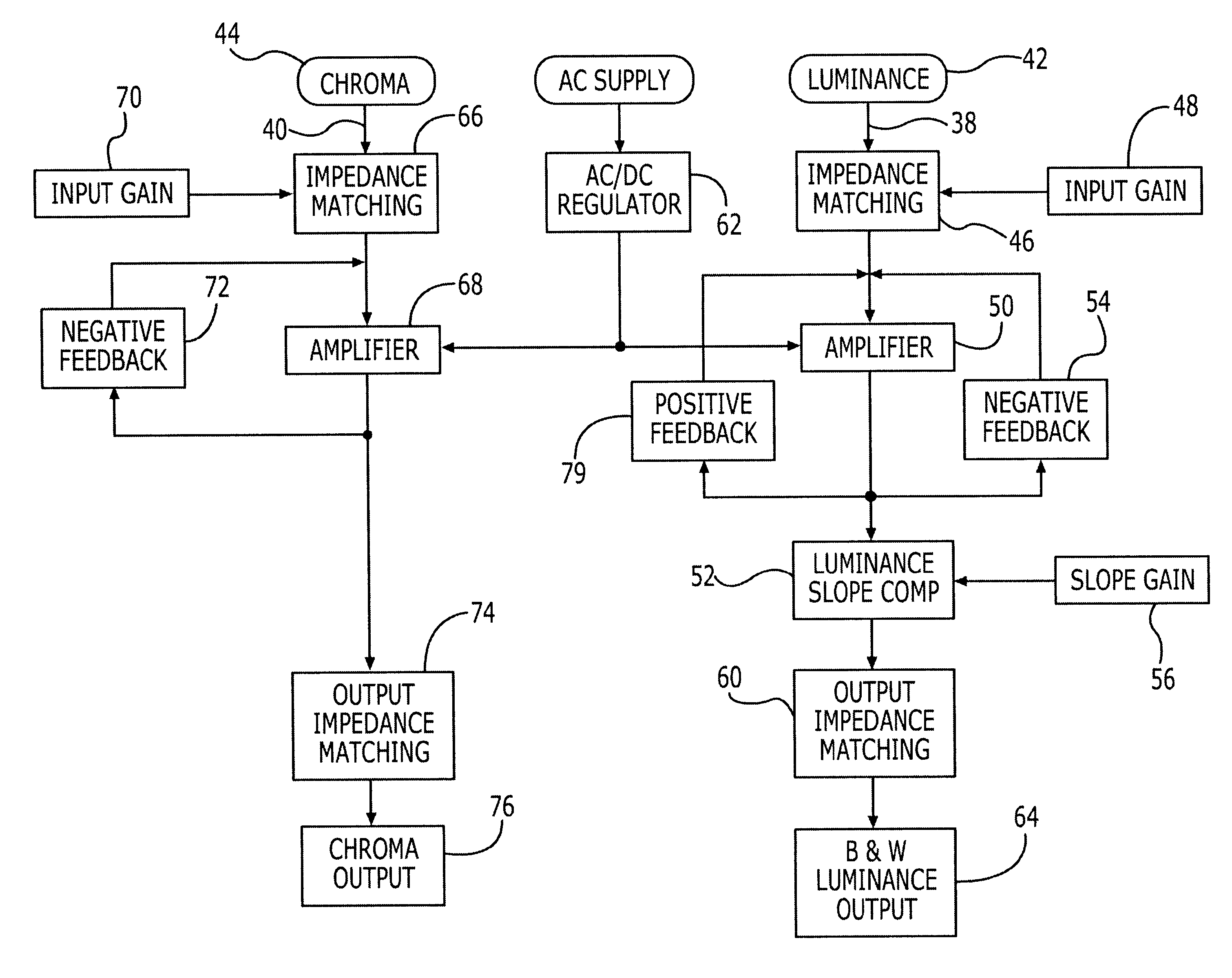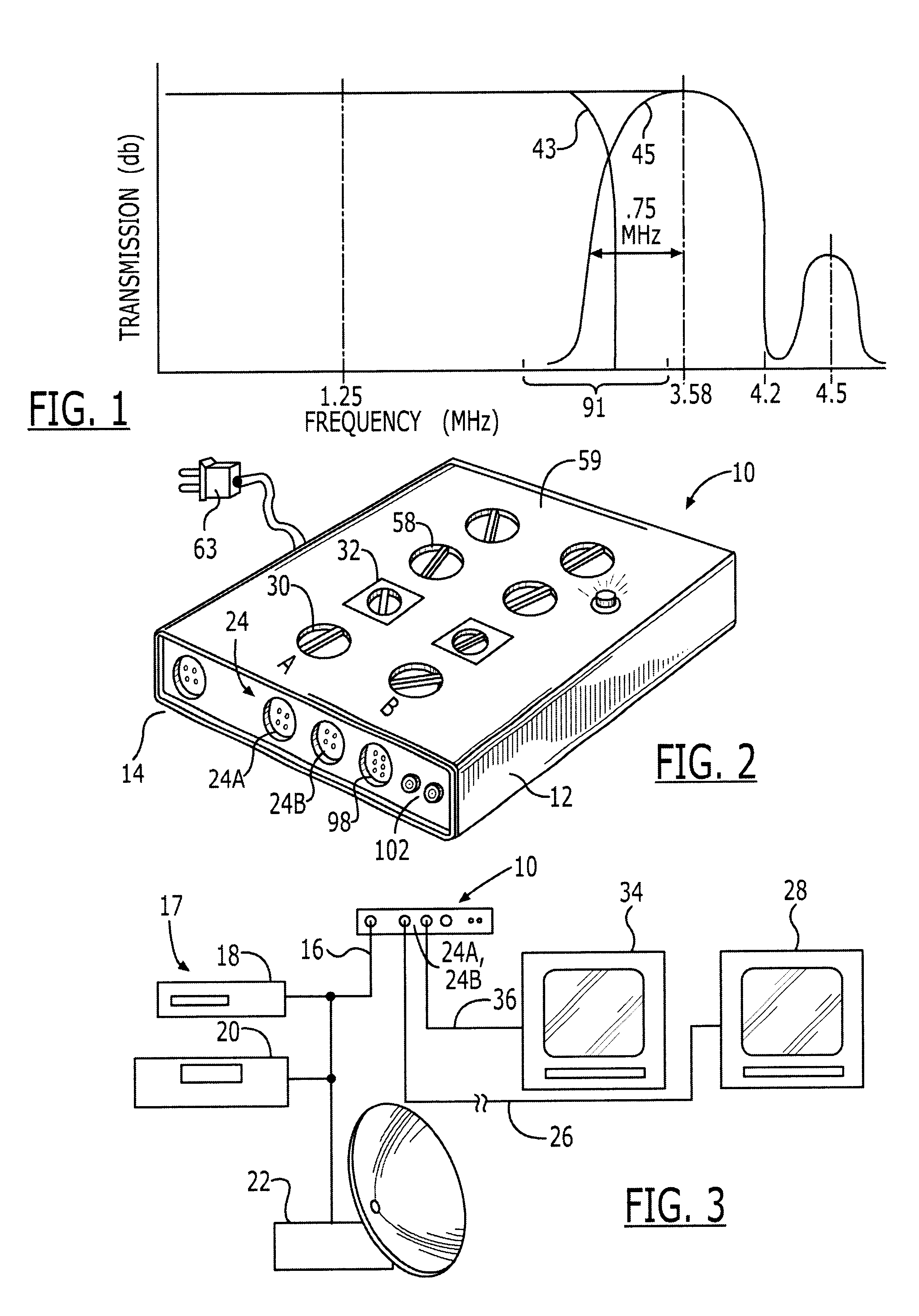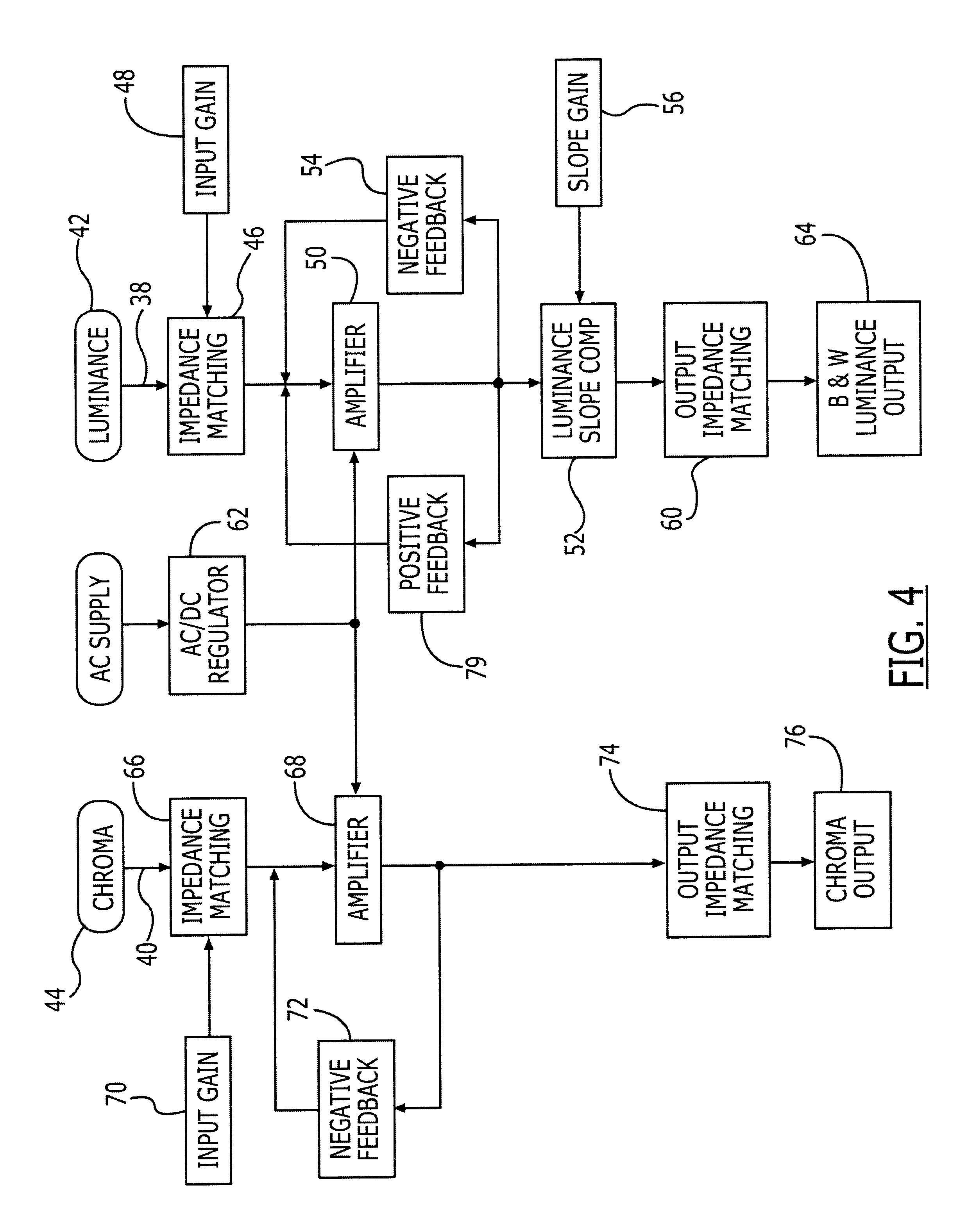It is an object of the present invention to provide enhancement of an S-video signal, containing luminance and chrominance (chroma) information, for delivering an enhanced S-video signal over a transmission line selected by the viewer for viewing on a monitor displaying a desirable image. It is further an object of the invention to provide a manually adjustable enhancement to the S-video signal for delivery of the S-video signal over lengthy transmission cables without signal degradation. It is further an object of the invention to provide transmission of a source video signal to a plurality of monitors while permitting adjustment of each signal for providing a pleasing picture on each monitor regardless of differing transmission line lengths between monitors and the video source.
The present invention is directed to S-video signal compensation for providing adjustable electronic compensation to maintain picture quality of an S-video signal transmitted over lengths of S-video cable, and provides embodiments, by way of example, with
NTSC and HDTV video signal bandwidths. One preferred embodiment of the present invention provides a single S-video input and single S-
video output with a dedicated set of controls including a chroma
gain, luminance,
gain, and cable compensation control, thus allowing for a precise and customized calibration of the S-video signal. An alternate embodiment provides for multiple inputs and outputs. S-video signal compensation provided is useful for broad bandwidths needed in a typical video
signal envelope. With a frequency response from DC to 20 MHZ, the S-video compensators of the present invention are capable of increasing
gain with little or no
distortion or
noise either in luminance or chroma signal information. The embodiments of the present invention, herein described by way of example, provide a full complimentary output stage eliminating the need for
coupling capacitors that could cause phase and frequency errors. Plus and minus power supplies feed highly accurate DC regulators, providing perfect operation even with AC voltages as low as 80 volts. Large filter capacitors eliminate the 120
hertz hum before regulations starts. Channel separation is achieved and is more critical than for audio signals because of the
high probability of beating interference and oscillation. A unique slope
amplifier is incorporated within the luminance stage to correct for any frequency degradation caused by connecting cables.
By way of example for one embodiment, with a
positive feedback signal across the
amplifier and a
high frequency band pass filters, both adjustable, a user can adjust the video
receiver to the same quality one could achieve by using a one meter length of the highest quality cable. Further, basic off-the-shelf cable such as standard shielded telephone cable is successfully used to transmit the video signal. A
positive feedback resistor (
potentiometer) and
capacitor network provides an increased signal amplitude to achieve a desirable high frequency response while a second
resistor (
potentiometer) and
capacitor network produce an upper to mid range slope or adjustment in frequency response to accommodate white balance and detail for a strong mid to upper frequency response driver offering signal nourishment needed to produce a preferred S-video signal for a vivid picture after experiencing transmission
line loss.
By
cloning a preferred embodiment, as is described in the detailed description section of this specification, an S-video
distribution system is provided. The input of the
distribution system is coupled directly through input gain potentiometers for both chrominance and luminance signals. The constant value of the potentiometers used offer a fixed
input impedance satisfying the incoming source. Since both luminance and chrominance are now adjustable, each monitor can be adjusted for luminance, chrominance, and resolution, keeping each monitor in check for quality. An additional summing amplifier is provided to reproduce a composite output to meet a need for this format in anticipated field use. Two amplifiers having
unity gain buffer the incoming S signal for providing a slave output to run additional distribution systems. This gives the user multiple channels, slave channels, and composite channels. By using a one
ampere power supply, the need for extra supplies for each
system is eliminated.
The present invention includes a
correction system for handling the tough demands for quality video signal transmission associated with S-video applications. With a video amplifier having a gain of 6 dB and varying luminance
signal frequency response over a particular frequency range using a bandpass filter, an output luminance signal is provided that has gain and adjustment sufficient for delivering a quality signal over a transmission line to a monitor. With a preselected gain and preselected frequency response, it is now possible to transfer a luminance signal
through transmission cable having lengths
ranging upwards to 150 and 300 meters while being able to maintain excellent picture quality.
 Login to View More
Login to View More  Login to View More
Login to View More 


